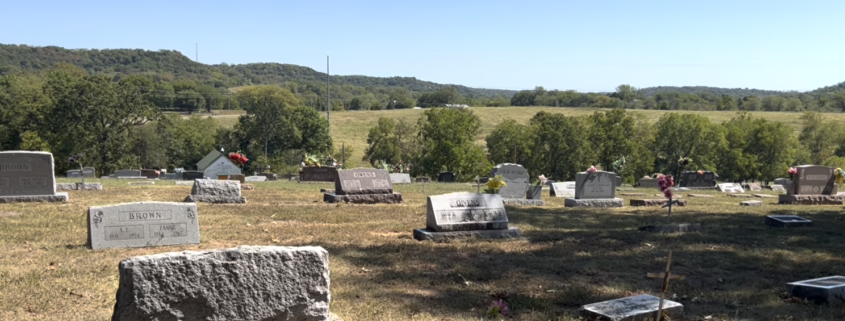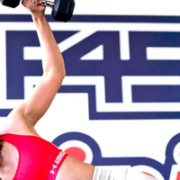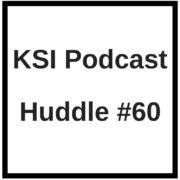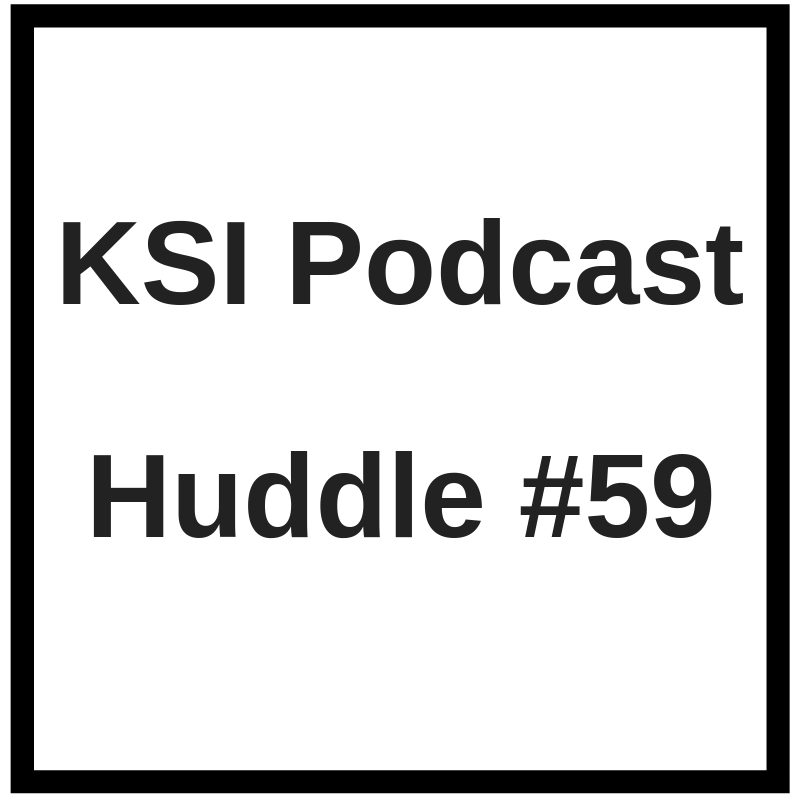Thanks Tommy
In a quiet rural cemetery outside of Sulphur Springs, Arkansas, United States, lay the remains of Tommy ‘The Duke Morrison’. Tommy is considered one of the most tragic stories in top-level US boxing. I believe his journey provides a great roadmap for all athletes especially those at the level where fame and fortune come knocking.
Tommy’s time as a world champion was fleeting. However, it may have been the loss of his right to participate in boxing that may been the thing that haunted him the most.
I just want to pursue my dream. That is to fight. That is what God put me here to do. He didn’t put me here to be a doctor or a lawyer. He put me here to fight.[22]
Tommy’s story deserves telling, both to respect his legacy as well as to serve the athletic world as a lesson on so many lessons.
As an athlete advocate, I feel sorry for Tommy, that the outcome of whatever guidance he did receive was not more successful. At the same time Tommy is not alone as an athlete that failed one too many tests that life presents as an athlete rises the fame and fortune ladder.
His life lessons can serve many.
Tommy had a rough start to life
Tommy Morrison was born in Gravette, Arkansas on January 2, 1969.[1] His mother, Diana, was Native American (half Ponca and half Otoe) and his father Tim’s ancestry is diversely reported as Scottish[2] or Irish[3]. He was raised in was raised in Delaware County, Oklahoma, spending most of his teenage years in Jay.[4]
His early years were apparently tough. In a later biography of Tommy, the author said:
Morrison…came from a broken home. He was a secondhand son, passed from here to there, from nowhere to nowhere bound, wherever he would stick. His father was abusive. His mother once beat a murder charge. His brother would spend fifteen years in prison for rape. And Tommy? His mother first made him use his fists when he was five years old.[5]
But having a rough start to life is not all negative. Tommy was a third-generation boxer[6], and the circumstances of his upbringing were conducive to creating a fighter:
Growing up predominantly consisted of alcohol and fighting for Tommy as a youngster. In his own words, Morrison said “There was often a lot of anger and violence growing up, I spent a lot of my time protecting people, mostly my Mother”.[7]
Tommy’s early sporting career
Tommy reportedly started boxing at the age of 10, and by the age of 13 was fighting adults on a fake ID. This suggests he was physically an early mature.
“When I saw him win a Toughman contest in the eighth grade, I knew something special was going on,” said Andy Hudson, his best friend. “Fourteen-year-olds just don’t beat the hell out of guys in their 20s and 30s. ” His mother was not surprised. Of all the boxers in the family, she always considered him to be the most natural.”[8]
However, he played other sports as well. He was offered a college football scholarship but turned that down to focus on his boxing career. [9]
Nearly an Olympian
After high school Tommy chose boxing over American football, and in his first year as a full-time fighter (July 6th 1988) Tommy contested the US Olympic trials, coming in second to Ray Mercer, who went on to knock out all four of his opponents in the 1988 Seoul Olympics and win the Gold Medal.[10]
The Morrison-Mercer fight at the US Olympic selections was won by a split decision and considered a tougher fight than any of the opponents at the Seoul Olympics.
That was perhaps the first major setback in Tommy’s career. You can appreciate that a win at the trials, followed by a possible Gold Medal at the 1988 Seoul Olympics, would have created a different path for Tommy. There is no guarantee the end would be any different, but that is a major path difference – between coming first and going to the Olympics and coming second and not going.
Tommy turns pro
Tommy turned pro in 1988 at 19 years of age, after a very brief but busy amateur career. His amateur record has been reported as 311 bouts, with 290 wins and 21 losses, with 263 wins by KO.[11]
His early pro record was so impressive that he was mentioned in the same sentence as Mike Tyson:
By the summer of 1989, he had amassed a record of 14-0. By now, Morrison had the nation’s fans and journalists questioning: who was this force of nature powering his way through the heavyweight division? The fight on everyone’s lips was Tyson vs Morrison…[12]
The Great White Hope
Tommy carried the burden of being referred to as another Great White Hope. This is a classic saying in US boxing when a big white man is plying his trade with potential in the heavyweight division.
Tommy was referred to endlessly as another ‘Great White Hope’.
I was impressed with how Tommy handled it, which I understand may be surprising to the reader as most of what Tommy did, I had questions about.
Tom told a Sports Illustrated journalist:
“It’s racist…Second, most White Hopes never make it.” [13]
He wanted to distance himself from this concept.
The author of a biography about Tommy was also impressed with Tommy’s stance:
It was inevitable that Morrison would come to be spoken of as a “Great White Hope.” To his credit, he did his best to avoid making race an issue. “It’s kind of sad,” he told the Kansas City Star. “To be honest, it’s a big advantage being white. There aren’t that many white fighters around. But I’d prefer to stay away from that because it’s racist.”[14]
What am I willing to sacrifice to be a World Champion?
In less than a year after turning pro, and at the age of about 20 years, Tommy was faced with what I believe was a career defining moment – do I pursue my goal of being a world champion professional boxer or do I take time away to be a movie star in a Hollywood blockbusting series called ‘Rocky’?
No, not all athletes get asked to detour through a brief Hollywood acting moment. However, all make similarly career-defining questions. The most common is – do I train for the best results in my chosen pursuit irrespective of what I look like, or do I allow my self to be distracted by shiny objects? Even as simple as train to look a certain way at the potential expense of my career?
Now I understand that not all athletes understand the implication of pursuing their visual appearance over performance, and I understand that sometimes it’s the coach overlaying the misguided value that an athlete needs to ‘look’ a certain way to be successful.
There’s more than one athlete who has asked me if they can do more beach muscles, to which I have replied – ‘Sure, when you are retired. Until then we will do the things that matter’.
However, as adults (over 18 years of age) the athlete has to accept the responsibility of their decisions.
Now to be clear Tommy did achieve World Heavyweight Champion status, twice. First in 1993, with the vacant WBO title, that he held for about 4 months and one title defence. The second was in 1986, the IBC belt for 4 months, which he lost the next fight.
Did Rocky V cost Tommy?
Let me ask you – would you have more likely known who Tommy Morrison was if he had been the dominant world champion, or for his role in Rocky V?
Tommy was in an era when success as a heavyweight male boxer was measured against their win-loss record with Mike Tyson. Tommy never got to fight Tyson.
Originally, in the early 1990s, I suggest that was in part because by the time Tommy was getting back into his rhythm post his distractions filming Rocky V, Mike Tyson was heading to prison.
That was strike one.
And by the time Mike got out of prison, Tommy was denied a second shot at Iron Mike for different reasons.
Loose
By the time Mike Tyson was released from gaol in 1993, Tommy’s career was not necessarily on the up and up. Why? In part because outside of training he was loose. So loose is that the word was his coaching team would try to keep him busy in training because they were not successful in keeping him under control outside of training hours.
The reality was that the boy from Oklahoma was drinking, drugging, and carousing with many, many women. Caton concluded, “he was a womanizer beyond anything I’ve ever known.” [15]
Morrison was notorious for partying, womanizing, and general poor decisions. [16]
He lost his first of two brief World Heavyweight Title belts on his second fight after obtaining it, some say by being out on the drink the night before:
During the build to the fight with Bentt in October 1993, he didn’t take his training all too seriously and… he went to a concert the night before the fight, which is obviously something that fighters just don’t and shouldn’t do, and was drinking beer. Tommy Morrison’s night caught up with him the next day. Nobody was giving Michael Bentt much of a chance but Morrison simply wasn’t ready. ..
How much did that alone cost Tommy?
Tommy Morrison had lost his title and HBO Boxing commentator Jim Lampley was very quick to point out that his $8 million payday with Lennox Lewis was gone as well.[17] [the next fight booking against Lennox Lewis]
That was strike two.
HIV
But all was not lost. Boxing promoter Don King gave Tommy a lifeline to achieve the Tyson fight.
…promoter Don King wanted to give Morrison millions of dollars to fight Mike Tyson in 1996. King knew that the whole world would pay to see the Great White Hope take on the World’s Baddest Man.[18]
Then, in February 1996 – on the eve of the first of three fights under contract with promoter Don King that would have eventually meant a fight with Mike Tyson and $40 million – came the stunning revelation Morrison had tested positive for HIV, probably knocking him out of the ring for good.[19]
That was strike three.
Compared to Magic
Tommy had the opportunity to be the Magic Johnson of boxing. By that I mean they were top athletes in their chosen field when they were diagnosed as being HIV positive, which challenged their future in their respective sports. Even non-sporting people know who former NBA star Magic Johnson is for the way he handled his diagnosis. He became an advocate for those with HIV. Most non-sporting people have no idea who Tommy Morrison is, in part because of the way he handled his diagnosis. A short time after his press conference announcing his HIV-positive result, Tommy denied he had HIV, and spent the rest of his life – to his death at 44 years of age – maintaining that position.
A difference to Magic was that boxing denied Tommy a license to fight. Magic made a few comebacks to the NBA and played in the 1992 Olympics post his HIV announcement. Things might have been better for Tommy had he too been able to ply his trade. Who knows.
Tommy was understandably affected by the reaction to his condition:
The day Morrison announced he was HIV positive, a sign just outside the Jay city limits that touted his accomplishments mysteriously fell down.[20]
I would walk into a room, and people would be like, ‘Hide the children. Here comes the guy with AIDS.’ That’s very demeaning, and it really hurts your spirit. ”[21]
That’s a tough road for anyone who loses not only their health but also their status. But Magic had been there already, and Tommy could have taken some cues from Magic’s playbook.
Conclusion
Many refer to Tommy’s boxing life and career as tragic. It’s difficult to disagree, however, I believe he also provided a role model – of career-defining decisions that no athlete should be modelling.
In a very lucid moment, in the press conference he announced his HIV-positive test, Tommy said:
“To all my young fans out there, I ask that you no longer consider me a role model. See me as an individual who had the opportunity to be a role model but blew it. Blew it with irresponsible, irrational, immature decisions.”[22]
Sure you could have achieved more, but that sums up the career of most. I believe your life lessons should not be in vain.
Tommy, you were a great role model, and I thank you for that. RIP.
References
[1] https://www.okhistory.org/publications/enc/entry?entry=MO034
[2] https://en.wikipedia.org/wiki/Tommy_Morrison#:~:text=His%20mother%2C%20Diana%2C%20was%20Native,from%20the%20clan%20Morrison%20ancestry.
[3] https://theneutralcornerboxingdotcom.wordpress.com/2020/04/22/the-duke-the-life-and-times-of-tommy-morrison/#:~:text=Morrison%20was%20also%20a%20talented,City%20to%20begin%20his%20career.n
[4] https://en.wikipedia.org/wiki/Tommy_Morrison#:~:text=His%20mother%2C%20Diana%2C%20was%20Native,from%20the%20clan%20Morrison%20ancestry.
[5] https://tss.ib.tv/boxing/featured-boxing-articles-boxing-news-videos-rankings-and-results/72749-book-review-the-duke-the-life-and-lies-of-tommy-morrison
[6] https://theneutralcornerboxingdotcom.wordpress.com/2020/04/22/the-duke-the-life-and-times-of-tommy-morrison/#:~:text=Morrison%20was%20also%20a%20talented,City%20to%20begin%20his%20career.n
[7] https://theneutralcornerboxingdotcom.wordpress.com/2020/04/22/the-duke-the-life-and-times-of-tommy-morrison/#:~:text=Morrison%20was%20also%20a%20talented,City%20to%20begin%20his%20career.
[8] https://www.oklahoman.com/story/news/1993/08/08/morrison-student-of-hard-knocks/62451759007/
[9] https://theneutralcornerboxingdotcom.wordpress.com/2020/04/22/the-duke-the-life-and-times-of-tommy-morrison/#:~:text=Morrison%20was%20also%20a%20talented,City%20to%20begin%20his%20career.
[10] https://olympics.com/en/athletes/raymond-a-mercer
[11] https://theneutralcornerboxingdotcom.wordpress.com/2020/04/22/the-duke-the-life-and-times-of-tommy-morrison/#:~:text=Morrison%20was%20also%20a%20talented,City%20to%20begin%20his%20career.
[12] https://theneutralcornerboxingdotcom.wordpress.com/2020/04/22/the-duke-the-life-and-times-of-tommy-morrison/#:~:text=Morrison%20was%20also%20a%20talented,City%20to%20begin%20his%20career
[13] http://sportsillustrated.cnn.com/vault/article/magazine/MAG1140300/2/index.htm
[14] https://tss.ib.tv/boxing/featured-boxing-articles-boxing-news-videos-rankings-and-results/72749-book-review-the-duke-the-life-and-lies-of-tommy-morrison
[15] https://commonreader.wustl.edu/c/duke-of-hazard/
[16] https://www.insidehook.com/culture/remembering-last-great-white-hope-tommy-morrison
[17] https://www.sportscasting.com/tommy-morrison-once-missed-out-on-an-8-million-payday-for-drinking-beer-at-a-concert/
[18] https://www.theguardian.com/sport/2007/feb/23/boxing.hiv
[19] https://www.oklahoman.com/story/news/2000/07/30/down-for-the-count-prison-brings-home-cold-reality-for-ex-boxing-champ-morrison/62188292007/
[20] https://www.oklahoman.com/story/news/2000/07/30/down-for-the-count-prison-brings-home-cold-reality-for-ex-boxing-champ-morrison/62188292007/
[21] https://www.brainyquote.com/authors/tommy-morrison-quotes
[22] https://www.brainyquote.com/authors/tommy-morrison-quotes









That’s a very touching tribute to Tommy Morrison. There was a huge stigma around HIV and AIDS at the time and it obviously had a tremendous impact on him, he admitted how much comments hurt him.
Impressive that he gave that advice to his fans at what must of been an excruciating press conference.
Yes, it was really tough on a boy from the rust-belt. didn’t handle it as well as Magic, unfortunately. I have found that athletes at their lowest person often show their best traits. could write a book about these observations with athletes i have worked with…